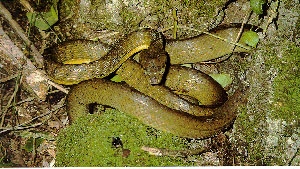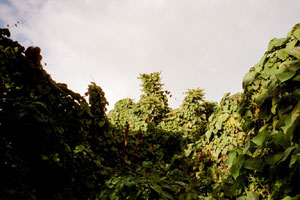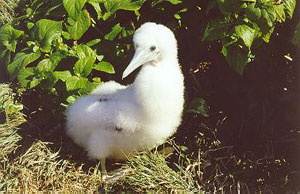







| PROGRAMMES | PROE | PROJECTS | PUBLICATIONS, LIBRARY and IRC | SITE MAP | SPREP FORUMS | WEBMAIL - Global / Local | HOME
| Bird Conservation and Invasive Species | |
| > | Staff |
| > | Projects |
| . | |
| Search |
Home > Programme > Bird Conservation and Invasive Species
Bird Conservation and Invasive Species
About Us
 SPREP’s Regional Invasive Species Programme (RISP) and
Regional Bird Conservation Programme (RBCP) have been in place since
1998; New
Zealand funds a full time position to manage the two programmes.
SPREP’s Regional Invasive Species Programme (RISP) and
Regional Bird Conservation Programme (RBCP) have been in place since
1998; New
Zealand funds a full time position to manage the two programmes.
The goal of the RISP is the: “Prevention, eradication or control of non-indigenous species which threaten ecosystems, habitats and species” and that of the Regional Bird Conservation Programme is: “to recover threatened bird species and to conserve all other indigenous bird species and their habitats.”
Following technical reviews of each topic, a Regional Strategy was cooperatively developed and set in place for each of these Programmes and approved for implementation by the member countries (Invasive Species in 2000, and the Bird Conservation in 2001). These documents continue to be used to lobby for funds and to direct the Programmes in their priorities including establishing in-country bird conservation projects and invasive species management.
 The primary role of the current Bird Conservation and Invasive Species
Programme Officer (POBCIS) is therefore to coordinate the implementation
of these complementary programmes and to facilitate the implementation
of the two Strategies. The current POBCIS, Liz Dovey, works closely
with a series of key organisations, such as IUCN’s Invasive Species
Specialist Group, the Global Invasive Species Programme, Birdlife International,
Conservation International, and the United Nations Development Programme
amongst others. Her chief aim in this has been to facilitate the implementation
of the Strategies (with a particular emphasis on accessing appropriate
funding to undertake the required tasks) and assist countries access
required information and expertise.
The primary role of the current Bird Conservation and Invasive Species
Programme Officer (POBCIS) is therefore to coordinate the implementation
of these complementary programmes and to facilitate the implementation
of the two Strategies. The current POBCIS, Liz Dovey, works closely
with a series of key organisations, such as IUCN’s Invasive Species
Specialist Group, the Global Invasive Species Programme, Birdlife International,
Conservation International, and the United Nations Development Programme
amongst others. Her chief aim in this has been to facilitate the implementation
of the Strategies (with a particular emphasis on accessing appropriate
funding to undertake the required tasks) and assist countries access
required information and expertise.
Overview of Problem
The Pacific Islands and territories occupy more than 38 million square
kilometers of the Pacific Ocean in their national waters and Exclusive
Economic Zones, an area more than three times larger than the United
States of America or China. Less than 2% of the Pacific region is land.
The high islands support large tracts of intact rainforests that contain
unique communities of plants and animals with many species found nowhere
else in the world – for some islands, 80% or more species are
endemic. The Pacific has been named one of the world’s global
biodiversity hotspots – these have more than  1500 endemic plant
species and more than 70% natural vegetation disturbed. A high proportion
of the region’s total biodiversity is threatened with extinction,
including 14% of Pacific bird species. Many of these endemic and threatened
species are of resource or spiritual significance to Pacific people.
Island ecosystems tend to have fewer species present and therefore
become less complex with distance from the continents – and simpler
systems are less resilient to new arrivals. Loss of species from naturally
simple island ecosystems increases their vulnerability to catastrophic
events and reduces the capacity of the ecosystems to provide food,
shelter, income for people and an ability to carry on traditional ways
of life.
1500 endemic plant
species and more than 70% natural vegetation disturbed. A high proportion
of the region’s total biodiversity is threatened with extinction,
including 14% of Pacific bird species. Many of these endemic and threatened
species are of resource or spiritual significance to Pacific people.
Island ecosystems tend to have fewer species present and therefore
become less complex with distance from the continents – and simpler
systems are less resilient to new arrivals. Loss of species from naturally
simple island ecosystems increases their vulnerability to catastrophic
events and reduces the capacity of the ecosystems to provide food,
shelter, income for people and an ability to carry on traditional ways
of life.
The establishment of invasive species into natural ecosystems constitutes one of the leading threats worldwide to the loss of species and consequently biodiversity. The impacts of invasive species is numerous and can be irreversible. Pacific Island countries are particularly vulnerable to the effects of invasive species due to the high proportion of endemism and restricted range species. Consequently, invasive alien species are the principal cause for the extinctions of native biodiversity on land and pose the greatest threat to remaining terrestrial biodiversity in the Pacific. Habitat modification or loss, over-harvesting, including illegal trade constitute the other two main causes for species extinctions.
